You'll find five effective methods to preserve your sun-cooked meals and maintain their unique flavors. Freezing works best for most dishes, requiring proper blanching and airtight storage. Dehydrating offers an eco-friendly approach, using solar power to remove moisture while retaining nutrients. Vacuum-sealing combines with solar drying for maximum shelf life, while Mason jar preservation provides reliable long-term storage for various foods. Salt curing adds a traditional touch, perfectly complementing solar cooking techniques. Each method brings its own benefits to the table, and discovering the right combination will transform your solar cooking experience.
Freezing Your Sun-Cooked Bounty
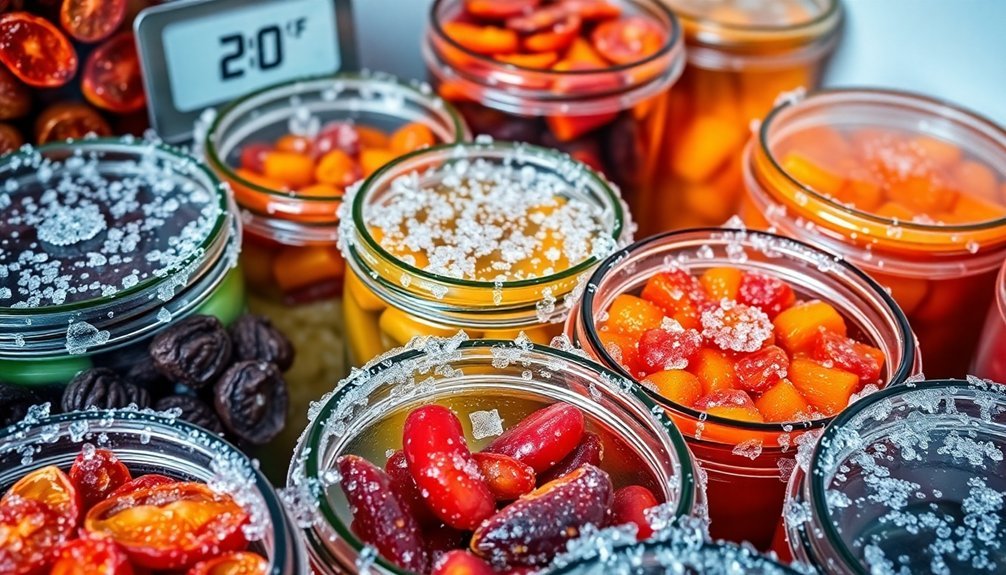
When preserving your harvest, freezing offers one of the most effective ways to maintain the flavor and nutritional value of sun-ripened produce.
Start by selecting fresh, quality items and washing them thoroughly. You'll need to blanch your vegetables in small batches – simply drop them in boiling water, time according to the vegetable type, then plunge into an ice bath for the same duration. Using a colander method makes transferring between hot and cold water easier and helps preserve the bright color of your vegetables.
Before packaging, verify your produce is dry to prevent ice crystals. Use airtight, freezer-safe containers or heavy-duty bags, removing as much air as possible.
Don't forget to label everything with contents and dates. For best results, freeze items individually first, then combine them in storage containers.
Keep your freezer at 0°F (-18°C) or below, and organize items so you'll use the oldest ones first.
Dehydrating Solar Kitchen Leftovers
Beyond freezing, solar dehydration offers another eco-friendly method to preserve your kitchen bounty. You'll need a basic setup using locally sourced materials like plywood, clear plastic glazing, and metal screening, which can cost around $300 new or less with recycled supplies. A well-built dehydrator can process 10 pounds of food in just two sunny days.
| Component | Function |
|---|---|
| Angled Box | Creates airflow chamber |
| FRP Glazing | Traps solar heat |
| Metal Screen | Absorbs/radiates heat |
| Dark Materials | Maximizes heat retention |
Your solar dehydrator works best when temperatures exceed 85°F with humidity below 60%. Most fruits will dry in 2-4 days, while vegetables take 3-5 days. You'll want to check your food regularly for the right level of dryness. This method not only preserves nutrients and intensifies flavors but also helps reduce food waste without using any electricity.
Vacuum-Sealed Solar Meals
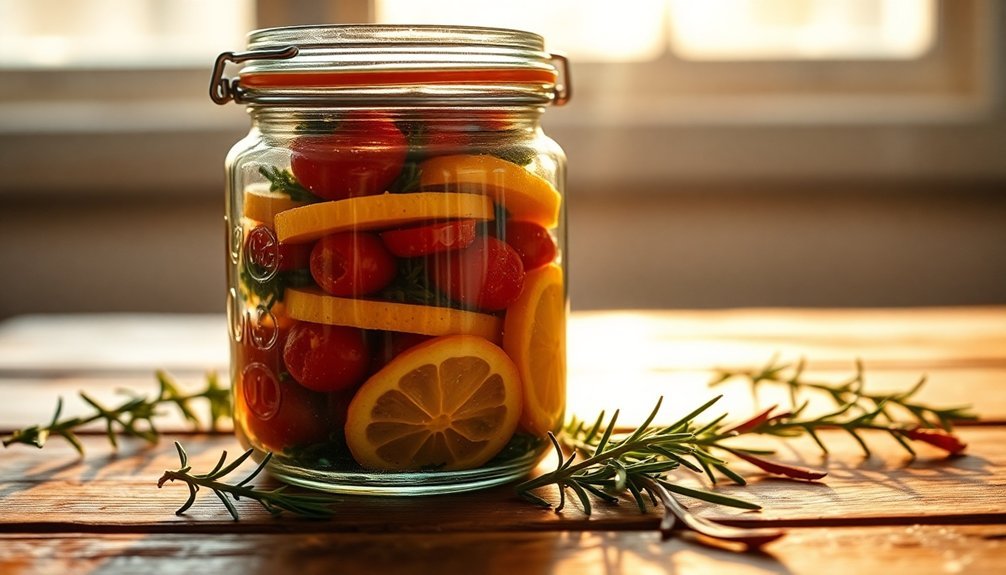
Combining solar drying with vacuum sealing creates an unbeatable preservation method for your kitchen harvest. You'll extend your food's shelf life up to two years when you store it properly in cool, dark places between 50°F to 60°F with humidity below 60%.
Your sun-dried, vacuum-sealed meals retain more nutrients than conventionally preserved foods because solar drying uses gentle heat that protects essential vitamins and minerals. Slicing ingredients into uniform sized pieces helps ensure consistent drying results.
You'll also save money while supporting sustainable practices, as this method requires no electricity or fossil fuels.
To maximize storage success, use high-quality vacuum sealer bags and consider adding oxygen absorbers.
Don't forget to label and date your packages, and store them in your freezer, fridge, or pantry depending on the food type.
This method works exceptionally well in sunny regions like Texas.
Mason Jar Preservation Method
Although Mason jar preservation requires careful attention to detail, it's one of the most reliable methods for long-term food storage. You'll need clean 500ml or 1000ml Mason jars with new lids featuring solid rubber seals. The preservation method you choose depends on your food's acidity level – water bath canning for high-acid foods and pressure canning for low-acid items. Thoroughly washing the jars helps eliminate any potential contamination from detergent residue that could affect food taste.
| Method | Best For |
|---|---|
| Water Bath | Jams, Pickles, Fruits |
| Pressure Canning | Vegetables, Meats, Soups |
| Fermenting | Probiotic Foods |
| Refrigerator Pickling | Quick Preserves |
| Dry Storage | Sealed Products |
Remember to leave proper headspace when filling jars and process them according to your chosen method. Store your preserved foods in a cool, dark pantry away from heat sources and sunlight. With proper storage, your preserved foods can last up to two years.
Salt Curing Solar Dishes
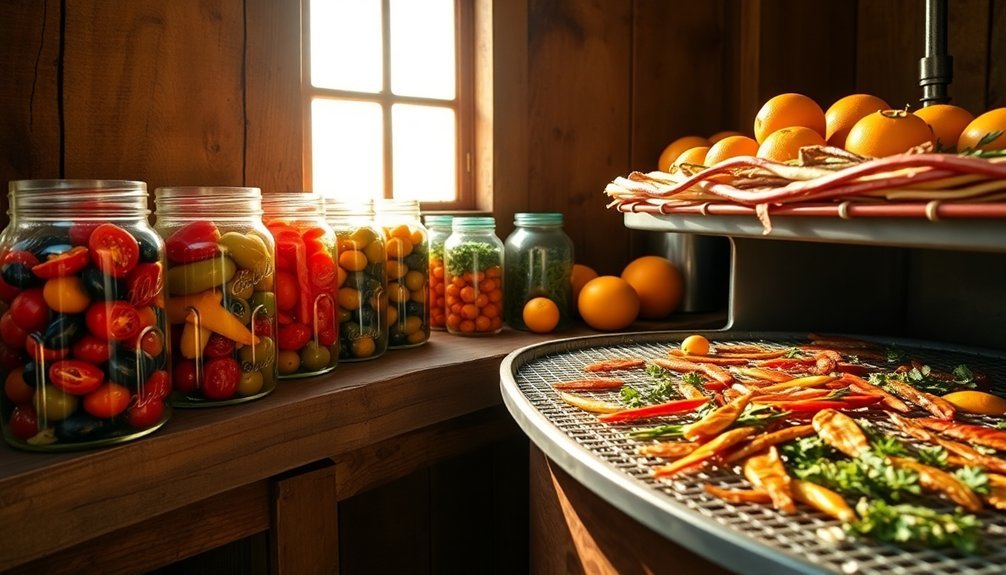
While salt curing has preserved food for millennia, modern solar techniques have enhanced this ancient practice.
You'll need to combine traditional salt curing principles with solar drying to maximize preservation effectiveness. Start by preparing your food with a precise 2.5-3.5% salt mixture, ensuring you're using fine salt without anti-caking agents.
When using solar methods, you'll want to cure your dishes in a controlled environment that maintains consistent temperature and humidity.
Place your salted items in a solar dehydrator or similar setup that protects from direct sunlight while allowing proper airflow. Monitor your food regularly during the curing process, which typically takes 12 hours or more.
Don't forget to wash and dry your cured items before storing them in the refrigerator for the final aging period.
Frequently Asked Questions
Can Solar-Cooked Foods Be Preserved Using Freeze-Drying Methods at Home?
Yes, you can freeze-dry solar-cooked foods at home if you've got a home freeze-dryer. You'll need to cool the food first, then follow proper safety guidelines during the freezing and vacuum-drying process.
How Long Should Sun-Dried Tomatoes Be Rehydrated Before Adding to Recipes?
You'll need 30-60 minutes for most rehydration methods. If you're using warm water, check at 30 minutes. For oil-based rehydration, let them soak for 24 hours to achieve the best texture.
What's the Best Container Material for Storing Preserved Solar Meals?
You'll want to use glass containers for storing preserved foods since they're non-reactive, prevent odor transfer, and withstand temperature changes. Their durability and airtight sealing capabilities make them your best storage choice.
Does Altitude Affect Preservation Time for Solar-Cooked Foods?
While altitude won't directly affect your preservation time for solar-cooked foods, you'll need to adjust your initial processing times if you're canning them, just as you would with traditional preservation methods at high elevations.
Can Fermentation Be Used to Preserve Leftover Solar-Cooked Vegetables?
Yes, you can ferment your leftover solar-cooked vegetables if they're still firm and not overcooked. Just cool them first, add proper brine, and use clean containers. They'll keep for up to 3 months when refrigerated.
In Summary
You've now got the tools to keep your sun-cooked creations fresh and flavorful for months to come. Whether you're freezing, dehydrating, vacuum sealing, jarring, or salt curing, each method offers unique benefits for preserving your solar kitchen masterpieces. Don't let your sun-made meals go to waste – start implementing these preservation techniques today and enjoy your sustainable cooking year-round.

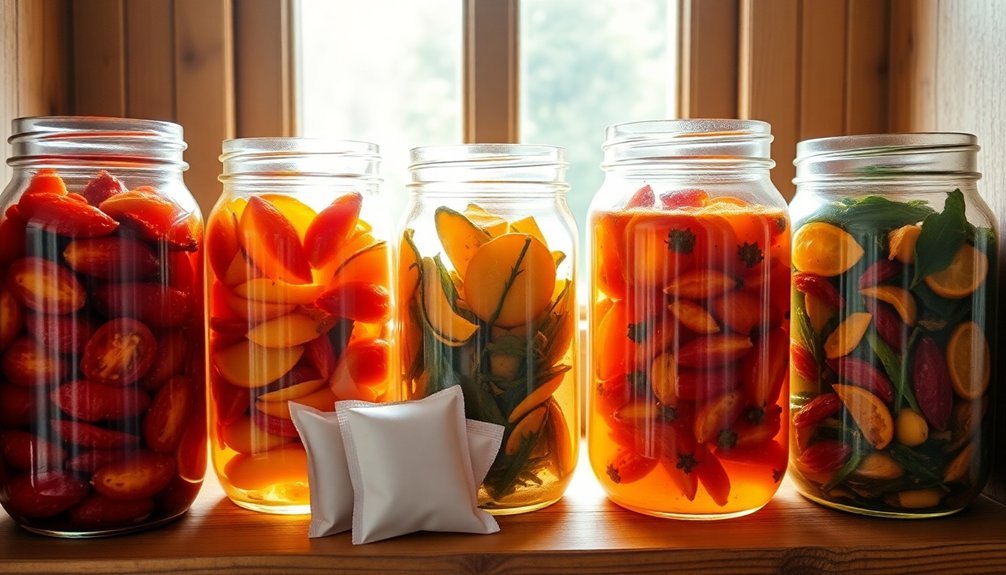
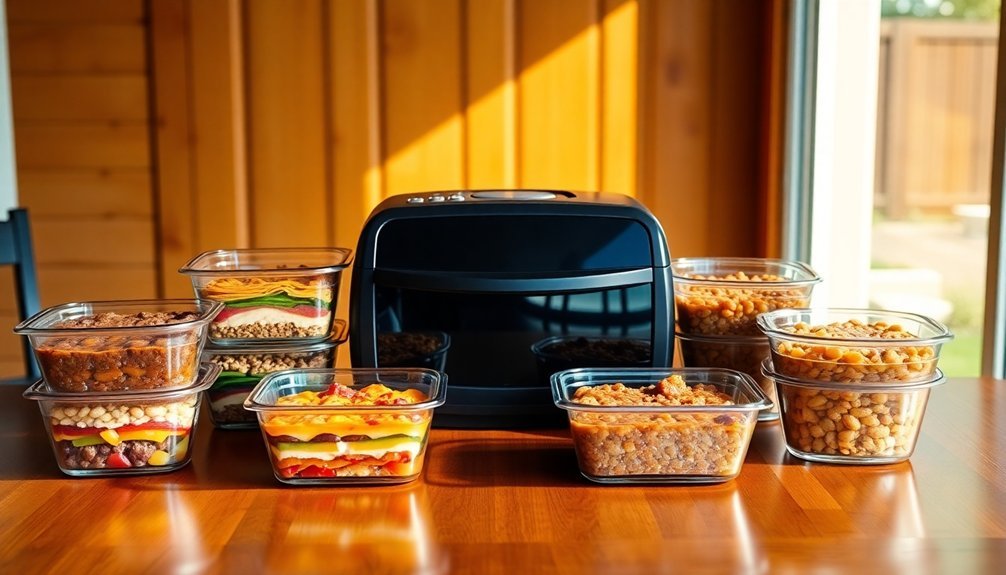
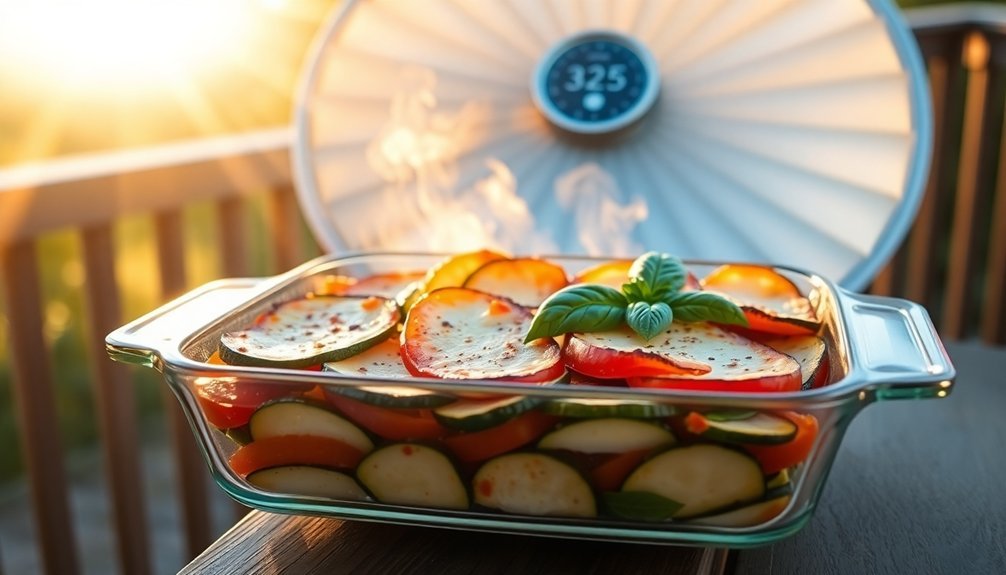
Leave a Reply